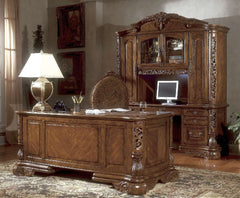Alright! Let's learn a little about this relatively new Mahogany substitute. Well, new to some folks but many luthiers, big name and garage builders have been hip to this more cost effective "Meliaceae" for a while now.
Let's get the uber-dorky stuff out of the way... Sapele is a (confusing) type of wood. "Entandrophragma cylindricum" is a tree of the genus Entandrophragma of the family Meliaceae. It is commonly known as sapelli or sapele mahogany, as well as aboudikro, assi, and muyovu.
Super helpful so far, riiight? Here it is in tree form to help put things into perspective....

Origin: West Africa
Sapele is in the same family as Mahogany and same genus as Utile. Remember that whole Phylum, Genus, Species thing from Bio-101? Yeah, me either!
Janka Hardness Rating: at 1410 is higher (harder) than Honduran (1070) or Tropical Mahogany (900). The janka scale is worth researching if you like pondering the difference in tone woods and why certain woods work better with others.
Sounds: much like Mahogany but due to the hardness, a little brighter, just a little... to some ears.
Looks: The coloring is spot on to many shades of mahogany that we see. It's also practically indistinguishable from Mahogany in terms of how the grain appears. Though Sapele tends to display Ribbons or slightly different shade streaks running parallel, creating a pleasing visual texture. I think this becomes more obvious when the wood is quartersawn.
A Martin made entirely of Sapele and a Sapele back on a Taylor 317E...


Workability: easy to work with but the tight grain can cause some tear out. It glues and shapes easily. Finishing isn't quite as easy as any non-porous wood but Sapele is no more difficult to finish than Mahogany.
Other uses include Boats, Fine Furniture, Cabinetry, Chairs, Desks, and Excelsiors. That's right. EXCELSIORS! Let me save you the hassle... this is an excelsior.

Quite impressive actually!
Basically, Sapele is very similar to Mahogany but Mahogany in and of itself is a broad term and implies several species... I think it's species. There's that whole failing Bio 101 thing again... Anyway, it's a perfectly suitable Mahogany substitute and quite honestly, the average piece of Sapele is visually more interesting than what we see with the average piece of Mahogany. It's that ribbon striping, tho!
Flat Sawn Mahogany, Quartersawn Mahogany, Quartersawn Sapele


From our own research with our eyes, minds, and ears it's close enough to Mahogany in all regards to be a perfect substitute. If you know us, and if you have read this far you probably do, when are picky with woods and like things in their traditional forms. However, when sonically compared to instruments we are certain are made from Mahogany, we would not be able to discern the woods from one another in a blind play test. Or at least subscribe those heard differences to the slightly different types of wood.
Wanna see some guitars with Sapele?
Written by Mathew Jenkins. Guitar Player for 30 + years. Teacher for 20. Designer and assembler of partscaster's with a tone-wood obsession.



How long has Sapele been popular to use for guitars, and has it caught on with other instruments? I’m getting a sapele uke and I’m sure others ukers will have a ton of questions. Thanks for the article, btw.
There’s more info about tonewoods in this video-guide I’ve found:
https://www.youtube.com/watch?v=HgRfBvqTlPg
Hey Nathan! I have read about Pau Santo but I have never worked with it or heard it (as far as I know!). It seems like due to its Janka rating, and the fact that it is oily, I’m willing to bet it sounds like Ebony or Cocobolo. It probably makes great fingerboards!
Hello, have you ever heard of a wood called in Spanish or Portuguese called “Pau Santo” from India? I can’t seem to find anything on this wood and what the translation into English would be. I am more familiar with the traditional American woods used in the guitar construction. Thanks